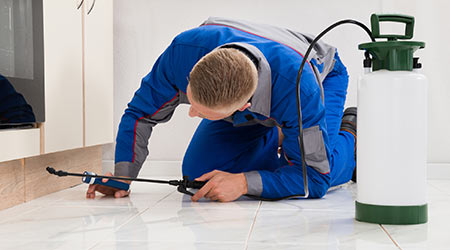
The EPA defines a pesticide as a product that “incorporates a substance or mixture of substances designed to prevent, attract, repel, destroy, or mitigate a pest. Generally, pesticides include insecticides, insect repellants, weed killers, fungicides, rodenticides, and disinfectants—including disinfectants and sanitizers used in water treatment. In the field of recreational water pesticides are generally directed at controlling algae and water-borne pathogens such as disease causing bacteria, viruses and protozoon parasites.
Under the Federal Insecticide, Fungicide and Rodenticide Act (FIFRA), the EPA is charged with evaluating all pesticides to ensure that they comply with federal requirements regarding protection of human health and the environment. Before being sold or used in the United States, a pesticide must be granted a license or “registration” by the EPA.
Evaluation of the candidate pesticide includes consideration of accuracy of label claims, efficacy as a pesticide, safety of workers or others who may directly or indirectly come in contact with the pesticide and the environmental impact of using the pesticide. Pesticide producing Establishments must be registered with the EPA.
A registered Establishment is assigned an EPA Establishment Number which must appear on the labels of all EPA registered pesticides produced by the Establishment. Registered products are required to meet rather exacting label requirements.
Whereas a pesticide is a substance (chemical or formulation) designed to control pests, a device "uses only physical or mechanical means to trap, destroy, repel, or mitigate any pest and does not include any pesticidal substance or mixture of substances…"
Like pesticides, pest control devices made or used in the United States can only be manufactured in EPA-registered Establishments. The manufacturer is required to obtain registration for the Establishment before beginning production or distribution of the devices. This requirement even applies to foreign manufacturers selling products in the US.
(FIFRA Section 17(c), See also EPA Compliance Monitoring/Importing and Exporting Pesticides and Devices, http://www.epa.gov/compliance/monitoring/programs/fifra/importexport.html
NSF Requirements for Pest Control Devices
In order to utilize the ready to use product dispensed by the on-site product generator, in food service areas such as cafeterias, lunchrooms, breakrooms and or kitchens, there must be a NSF International registration on the system. This registration is awarded to those who have met the guidelines for Proprietary Substances and NonFood Compounds. You can get more on these guidelines by contacting NonFood@nsf.org.
Once a system has been NSF registered, the registration will look something like this. (Example only)
“This device is acceptable for use as an ozone generating device providing sanitation and disinfection to hard, inanimate, pre-cleaned surfaces in and around food processing areas (PI). A potable water rinse is not required following the use of this device on previously cleaned hard surfaces provided that the surfaces are adequately drained before contact with food. The device must only be use in a manner consistent with the manufacturer's labeling and use instructions.”
David Thompson is the Director of Education for GEM Supply, responsible for four Learning Centers in Central Florida. He is also the host of a weekly internet broadcast show, “Beyond Clean with Dave”, which focuses on the messages within the professional cleaning industry: healthy, positive and progressive. Dave can be contacted at DThompson@GCICertified.com
posted on 6/15/2017

 The Down and Dirty on Cleaning in Virus Season
The Down and Dirty on Cleaning in Virus Season How Surfactant Use is Expanding in Commercial Cleaning
How Surfactant Use is Expanding in Commercial Cleaning